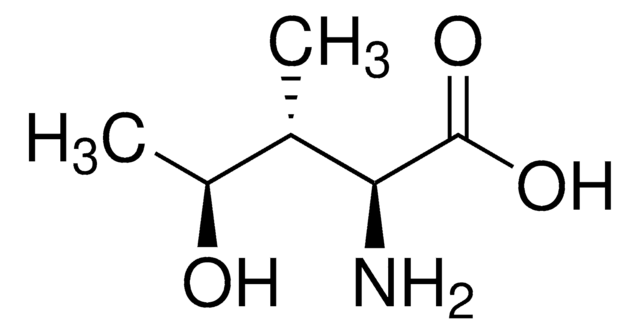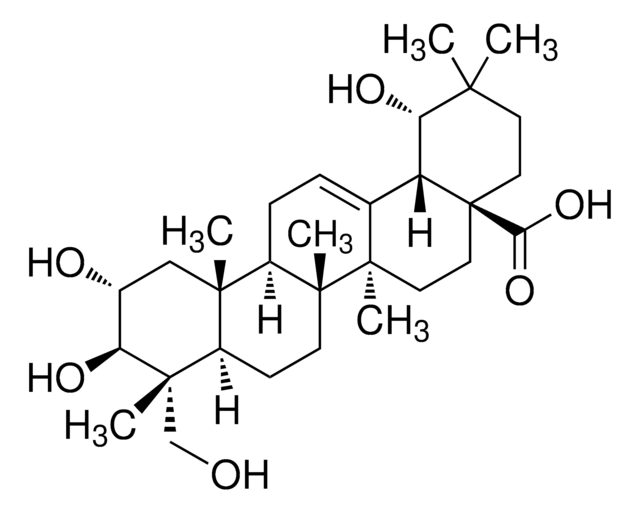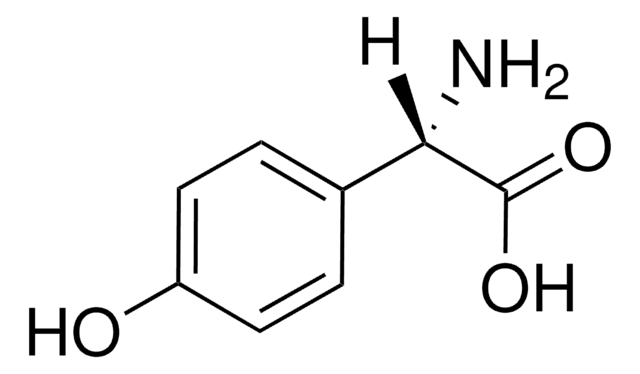49549
4-Hydroxy-L-isoleucine
≥98.0% (TLC)
Synonim(y):
(2S,3R)-2-Amino-4-hydroxy-3-methylpentanoic acid
About This Item
Polecane produkty
product name
4-Hydroxy-L-isoleucine, ≥98.0% (TLC)
Próba
≥98.0% (TLC)
aktywność optyczna
[α]/D +34.0±2.0°, c = 1 in H2O
kolor
white to off-white
temp. przechowywania
2-8°C
ciąg SMILES
CC(O)[C@H](C)[C@H](N)C(O)=O
InChI
1S/C6H13NO3/c1-3(4(2)8)5(7)6(9)10/h3-5,8H,7H2,1-2H3,(H,9,10)/t3-,4?,5-/m0/s1
Klucz InChI
OSCCDBFHNMXNME-DSDZBIDZSA-N
Szukasz podobnych produktów? Odwiedź Przewodnik dotyczący porównywania produktów
Działania biochem./fizjol.
Opakowanie
Hasło ostrzegawcze
Warning
Zwroty wskazujące rodzaj zagrożenia
Zwroty wskazujące środki ostrożności
Klasyfikacja zagrożeń
Eye Irrit. 2 - Skin Irrit. 2 - STOT SE 3
Kod klasy składowania
11 - Combustible Solids
Klasa zagrożenia wodnego (WGK)
WGK 3
Temperatura zapłonu (°F)
296.6 °F
Temperatura zapłonu (°C)
147 °C
Certyfikaty analizy (CoA)
Poszukaj Certyfikaty analizy (CoA), wpisując numer partii/serii produktów. Numery serii i partii można znaleźć na etykiecie produktu po słowach „seria” lub „partia”.
Masz już ten produkt?
Dokumenty związane z niedawno zakupionymi produktami zostały zamieszczone w Bibliotece dokumentów.
Nasz zespół naukowców ma doświadczenie we wszystkich obszarach badań, w tym w naukach przyrodniczych, materiałoznawstwie, syntezie chemicznej, chromatografii, analityce i wielu innych dziedzinach.
Skontaktuj się z zespołem ds. pomocy technicznej








